Virtualization is an efficient backbone of computing in this digital space, and at the core of every virtual machine lies a mighty file: a VMX file. This file isn't just a line-up of settings; it's the complete configuration guide that tells your virtual machine how to operate. From defining how much memory is allocated to mapping network adapters and even USB controllers, it holds all the key instructions for a virtual environment.
Without it, the VM would be like a machine with no blueprint, unable to start, manage hardware, or connect properly. For a manager managing an enterprise workload or building a lab setup, this article contains everything from how to open and modify them. Besides, you’ll get a complete overview of what a VMX file is in VMware and its standard settings.
Table of Contents
Part 1. What is VMX Format & VMX File in VMware?
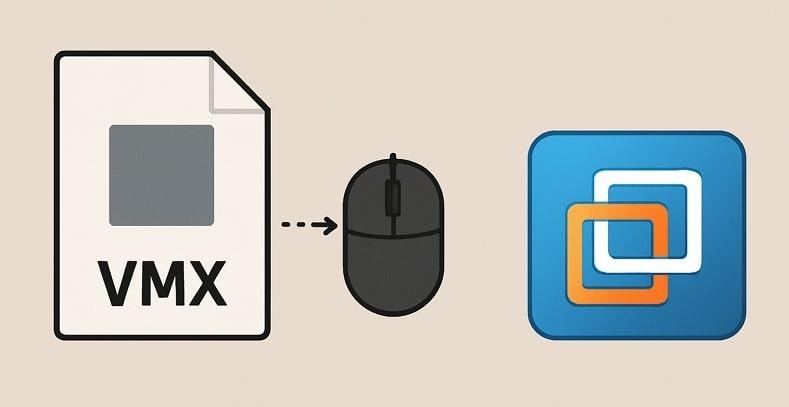
For what is VMX format, it's a simple text-based file structure used by VMware to store all the settings and configurations for a virtual machine. It's written in an easy-to-understand format that uses key-value pairs, where each line sets out how VM should run.
For instance, you might see a line like memsize = “4096”, which means the VM has 4 GB of memory allocated. Overall, it's a human-readable format that covers everything from hardware details to networking options and behaviors for virtual BIOS or UEFI.
VMX File in VMware
Simply, the VMware VMX file acts like the brain, telling VMware products, including VMware Workstation, VMware Player, or VMware ESXi, how to run. In an enterprise-grade hypervisor, VMware ESXi, these files help in hosting multiple VMs on a physical server. Ultimately, every time a VM is powered on, VMware reads the VMX files to know how to configure and launch it.
Part 2. What Does a VMX File Contain? List Common Settings
As demonstrated, a VMX file includes all advanced settings for virtual BIOS, making it an important asset for managing VM performance. Since it's a plain-text file, users can easily view and edit these settings when needed to fine-tune their virtual space. To have a brief idea, explore the given table for the list of common settings typically found in a VMX file:
| Common Settings | Description |
| .encoding | It specifies the character encoding used in the VMX file (e.g., UTF-8). |
| config.version | These settings indicate the version of the VMX file format. |
| virtualHW.version | Explains the virtual hardware version of the VM (defining the compatibility levels). |
| guestOS | Demonstrates the guest operating system installed in the VM (e.g., Windows 10). |
| memSize | Defines how much memory (RAM) is allocated to the virtual machine. |
| displayName | This sets the display name or label for the virtual machine. |
| powerType | It defines the power behavior (power off, on, reset, suspend) for the VM operations. |
| floppyX | Manages the floppy drive settings, such as presence and file associations. |
| numvcpus | Sets the number of virtual CPUs assigned to the VM. |
| scsiX | It handles the SCSI controller settings and related virtual disc configurations. |
| ethernetX | Helps configure virtual network adapters (device type, network name, MAC address). |
| ideX | Defines the settings for IDE controllers and their attached virtual drives. |
| usbX | Controls the USB device settings, such as availability and connection mode. |
| sound | It helps in configuring the virtual sound card options. |
| tools.syncTime | Enables or disables time sync between the VM and the host machine. |
| uuid. bios | A unique identifier for the VM’s BIOS instance. |
| uuid. location | It's an identifier based on the VM’s storage location. |
Part 3. How to Open a VMX File? A Complete Guide
After what a VMX file is and what it contains, the following section now covers how to open a VMX file on different platforms. Whether you're a Windows, Mac, or Linux user, the given part contains specified programs for editing the configuration or running a VM:
For Windows
On Windows, VMX files can be accessed using basic text editors like Notepad or Notepad++ because they are plain-text files. Anyhow, these editors help view or modify the files; they don't allow you to actually run the VM.
For this, VMware Workstation relies on hypervisor technology that powers vSphere to run virtual machines and guest operating systems. Explore this tutorial to open a VMX file on your Windows without rebooting:
Step 1. First, access the VMware Workstation on your Windows and press the "Open a Virtual Machine” option from the main interface. Now, browse to the location of your desired VMX file and select it afterward.
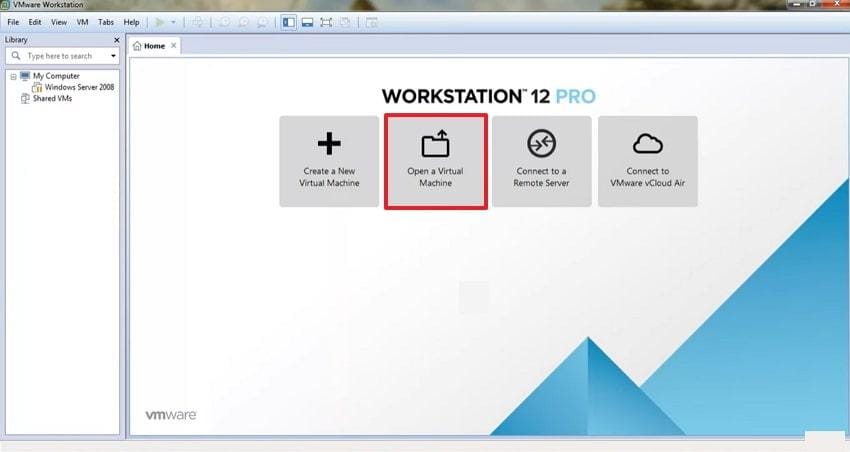
Step 2. Once located, click the “Power on this Virtual Machine” option in the top left and access the virtual machine for the VMX file.
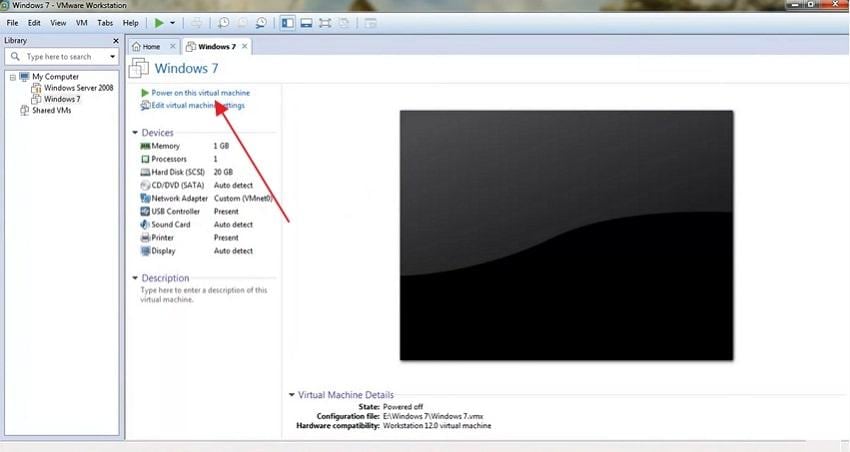
For Linux
Linux users can manage VMX files in 2 main ways, either through VMware Workstation or through editors like Nano or Gedit. Like Windows, VMware Workstation for Linux enables developers to run files with different privacy settings and network configurations.
Through the Create a New Virtual Machine option, you can access your VMX file by browsing it. The given manual explains how to open VMX file using VMware Player:
Step 1. To do so, deploy VMware Workstation for Linux and click the “Create a New Virtual Machine” option from the home screen.
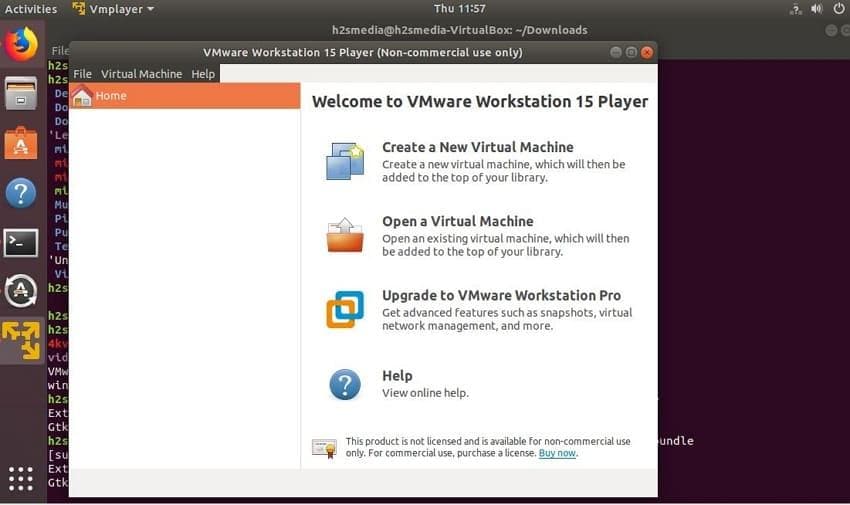
Step 2. After this, browse your desired VMX file and press the “Open” button to access your file in the Virtual space.
For Mac
An effective way to run VMX on a Mac is by using VMware Fusion, VMware’s official virtualization platform designed for Mac users. It provides developers with a versatile and automatable platform to build and test applications of any kind.
For VMX VMware Fusion import, you’ll need to copy the file and paste it into the virtual machine to open it automatically within the VM library. To have an overview, follow the given tutorial:
Step 1. Initially, deploy VMware Fusion on your MacBook and navigate to your VMX file. Right-click it to reveal the drop-down menu and settle on the “Copy” option. After this, copy the file and paste it into your VM environment.

Step 2. In the Virtual Machine window, right-click your VMX file and choose the "Open" option to import your file into the VM library.
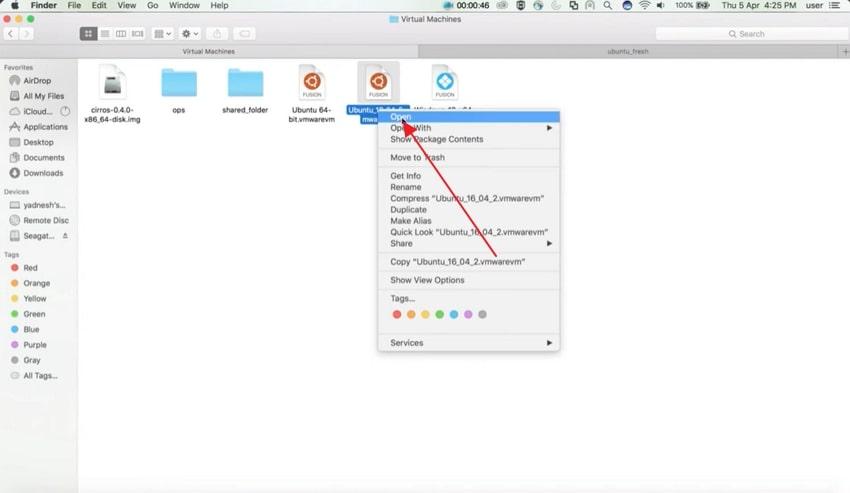
Pro Tip. How to Repair Damaged/Corrupted VMX File
Whenever your virtual machine fails to start or displays errors related to the VMX file, it might indicate corruption. This broken file can prevent your VM from loading properly while putting your virtual space at a major risk. Now, the only convenient solution is Repairit File Repair, which supports multiple file repairs at the same time. Not only this, but it allows you to go through them before saving them to your device.
Its Engineering File Repair functions enable one to mend files such as CAD drawings and SketchUp files directly on your PC/Mac. Including the VMX file, when the program completely repairs your damaged files, it notifies you with a prompt to save. On your screen, you can examine the ongoing repair process for every specific file added. Besides, users can reveal all the unrepaired and repaired files with numbers in different sections.
Key Features
- Mend Excel Files: This program fixes all Excel corruption errors, including unrecognizable formats or unreadable content.
- Fixes PDF Corruption Issues: It extracts and fixes all the components in a PDF file without needing to modify the original.
- Word File Repair: For Word files, it offers robust algorithms for text, images, and hyperlinks, supporting almost all new or old versions.
For a VMX file corrupt issue, without looking anywhere, simply follow the given expert guide to restore your VM’s configurations:
Step 1. Add the Damaged or Corrupt VMX Files
To start, access the “More Types Repair” section from the left panel. Among the options, choose the “Engineering File Repair” option to start the process by adding corrupted VMX files.
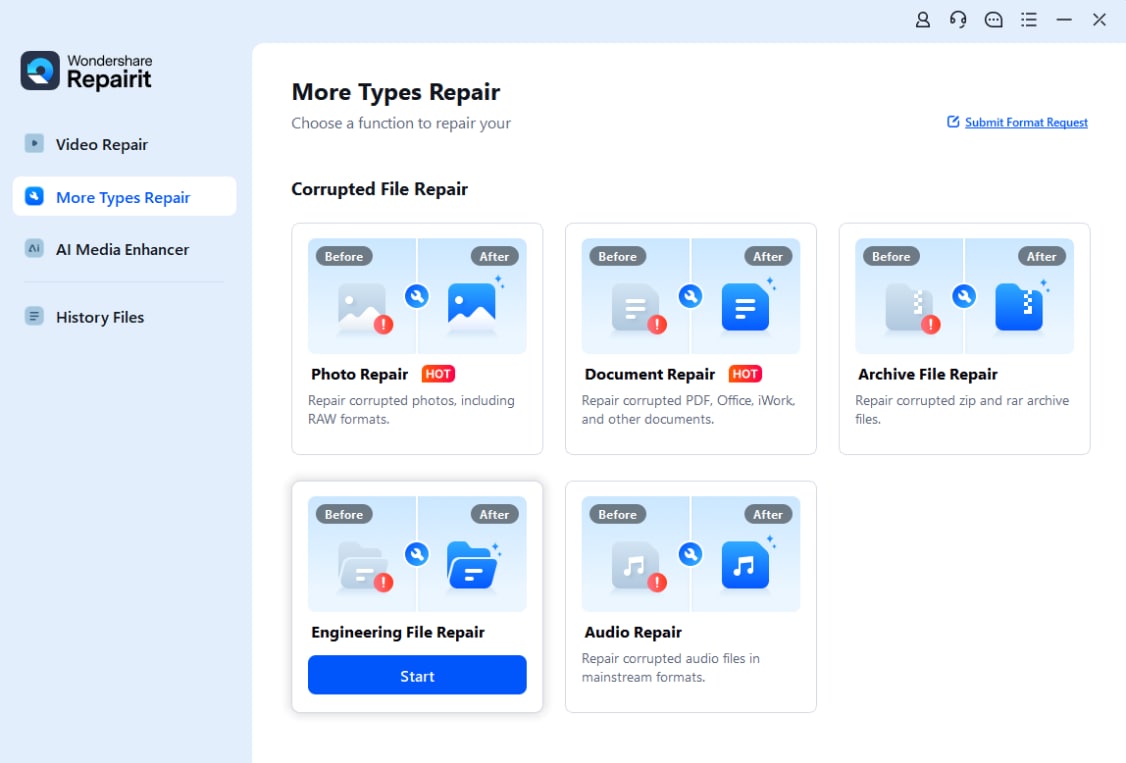
Step 2. Insert All the VMX Corrupted Files
Entering the new interface, press the “+ Add” button to insert all the damaged VMX files into the program.
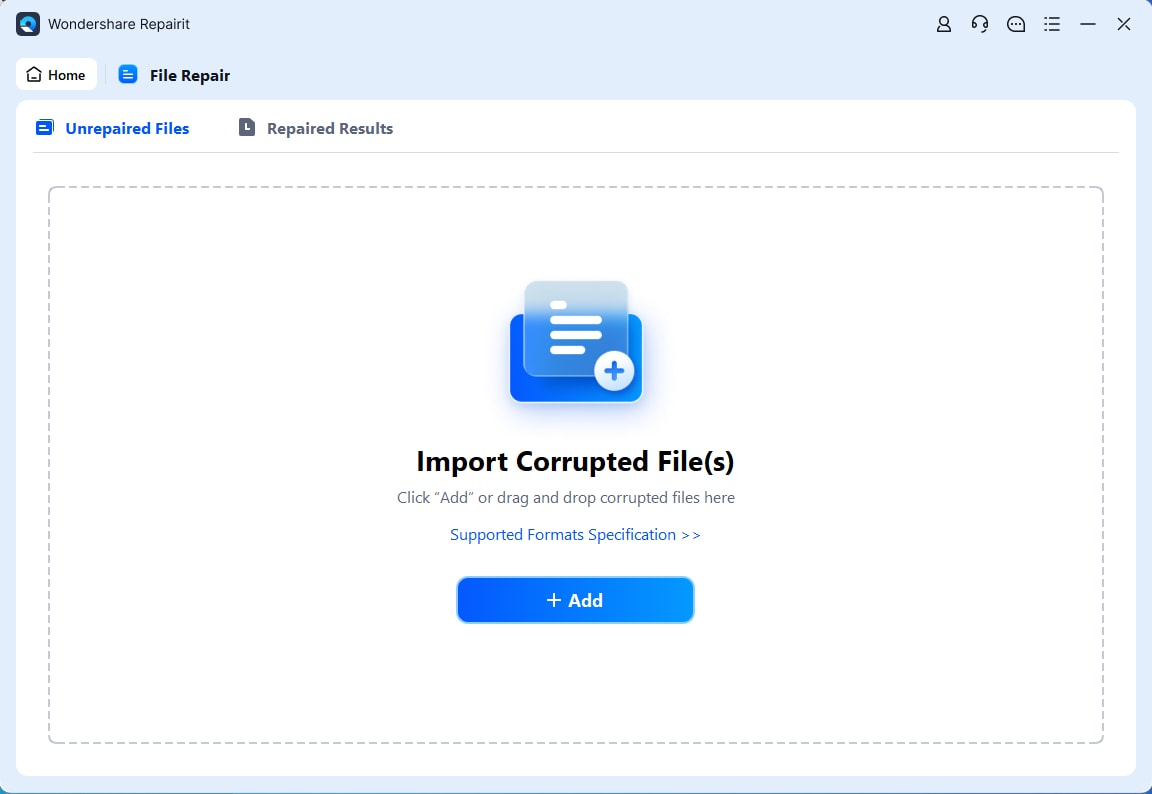
Step 3. Initiate the Repair of Engineering Files
When loading files is done, navigate to the “Repair” button to fix all the added files at once, regardless of their format.
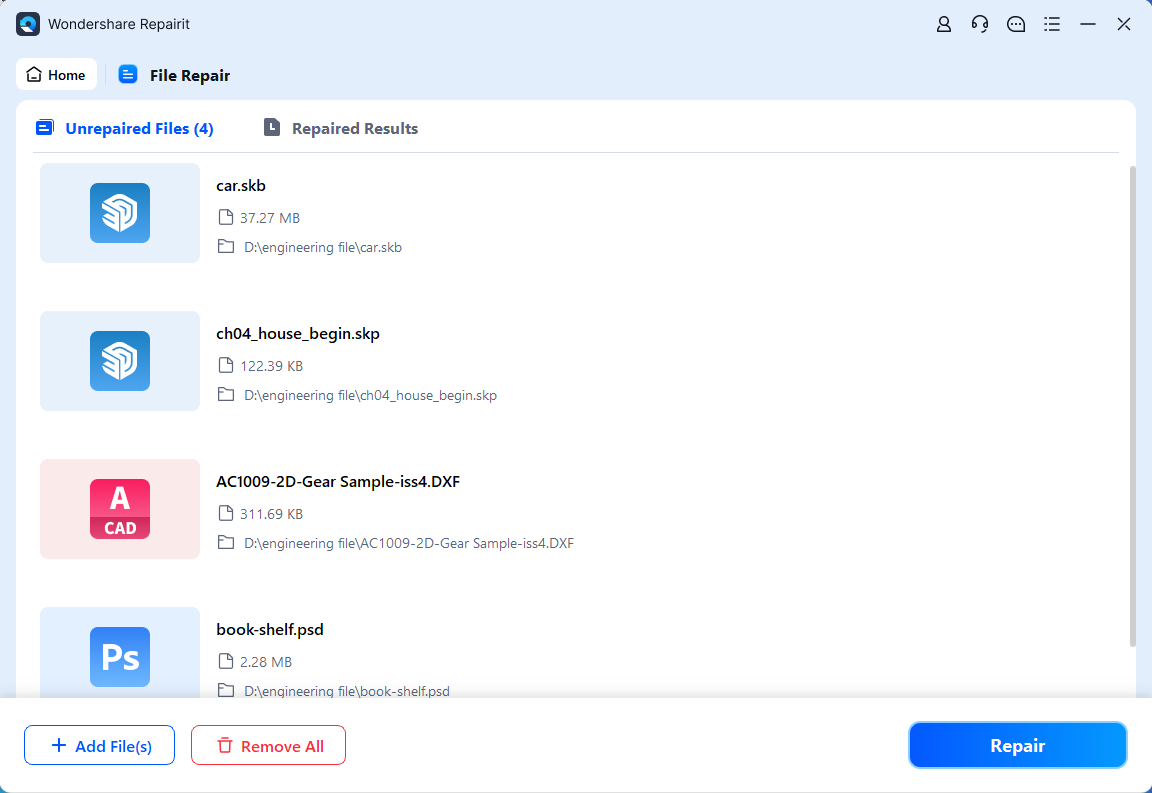
Step 4. Examine and Store the Repaired VMX Files
After the repair, press the “Preview” button from the notification window to examine your VMX files before heading with the “Save” button.

Repair Damaged/Corrupted VMX File

Conclusion
In conclusion to the VMX review, it's clear that understanding how to open a VMX file is important for anyone working on VMware. For customizing performance settings or troubleshooting boot issues, a workaround on the VMX file gives you better control over the virtual environment. When you know how to access it, repairing can be another point of concern, which requires a dedicated platform like Repairit.
Frequently Asked Questions
-
Q1. Can I recreate a VMX file if it’s missing or deleted?
Absolutely, a VMX file can be recreated using the 2 reliable methods, each suited to different skill levels and recovery needs. The first VMX VMware option is to use the New Virtual Machine option, which perfectly automates the process of generating new files. Secondly, advanced users with a strong understanding of virtual machines can manually recreate using the text editor. -
Q2. Is it safe to manually edit a VMX file?
Although it is generally safe to manually edit a VMX file because it is stored in plain text or uses a simple key-value format. Still, this task might require an advanced user who is familiar with VMware configuration syntax. -
Q3. Will repairing the VMX file delete my VM data?
Not at all; the VMX files only contain configuration settings, and repairing them won't affect your virtual hard disk files. Here, professional-grade repair software like Repairit can make a huge difference by repairing every minor issue in your file.
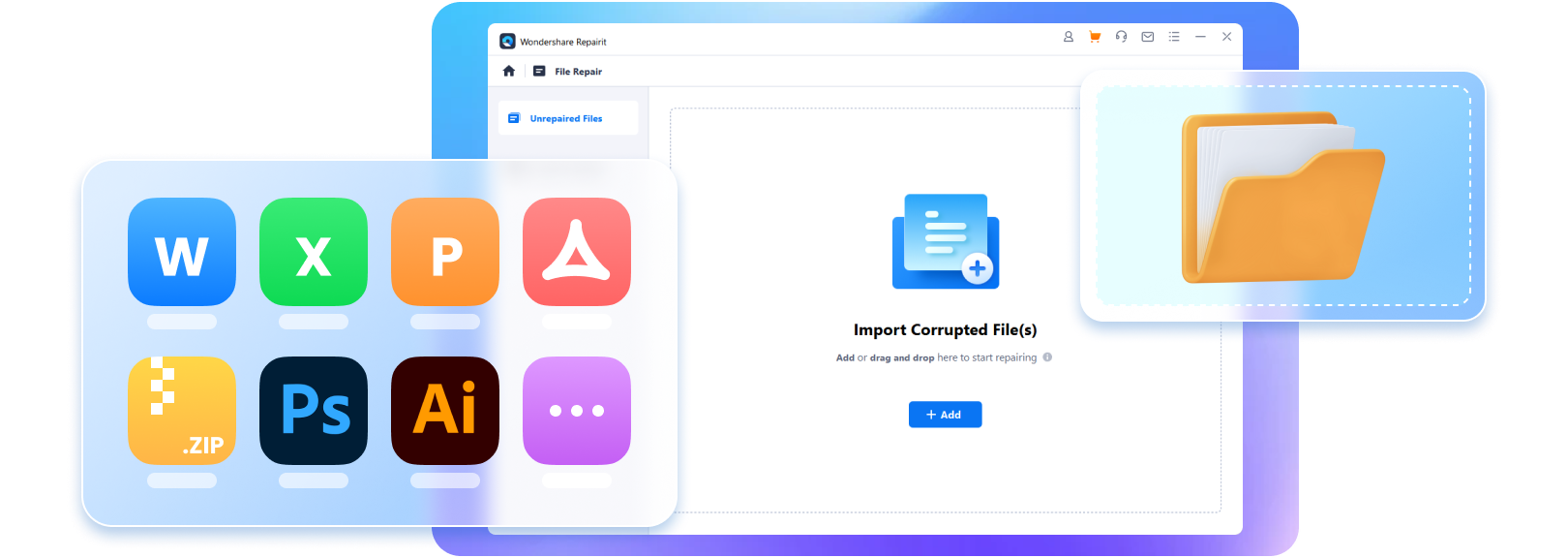

 ChatGPT
ChatGPT
 Perplexity
Perplexity
 Google AI Mode
Google AI Mode
 Grok
Grok

